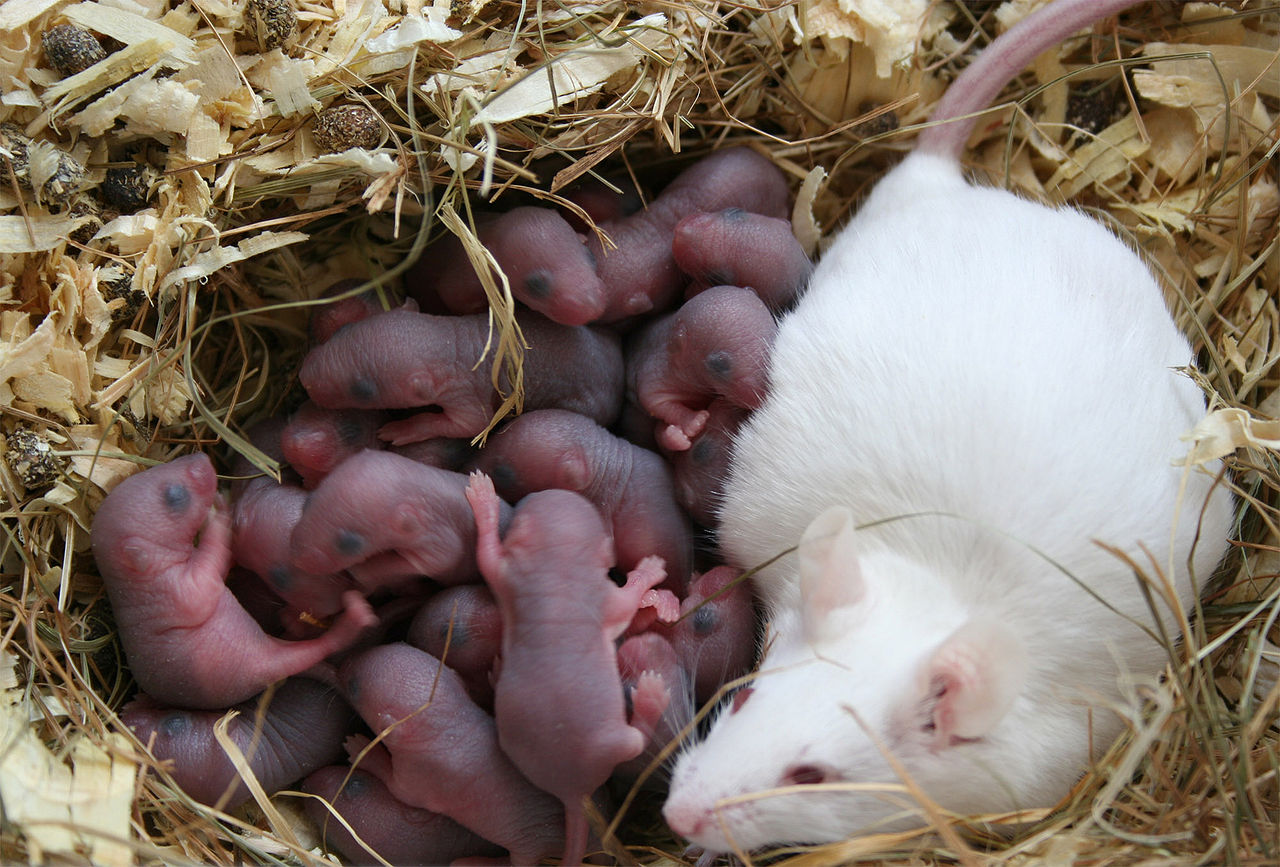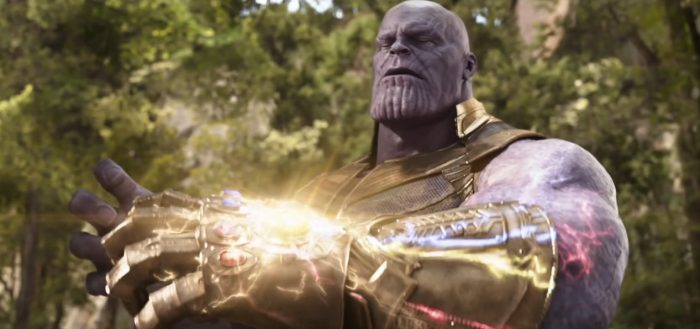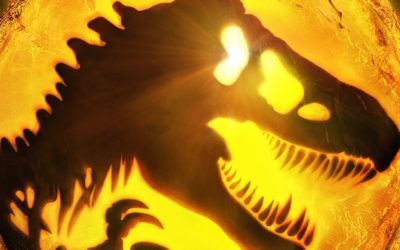When you watch Avengers: Infinity War, you’re clearly left with the strong feeling that Thanos did what he did in order to save the universe – to diminish the stress of an unlimited number of lifeforms chasing after a limited number of resources. To bring peace. Harmony. To prevent what he saw happen on Titan happening to the entire universe.
Hence, the snap.
According to Marvel Studios President Kevin Feige, Thanos’ snap extinguished half of all life. Specifically speaking to the question from Birth, Movies Death, Fiege doubled down on the notion that this was quite literal – half of Ant-Man’s ant pals, half the animals, half the plants, half the bacteria. Half.
“Yes. Yes. All life,” Feige said.
Okay. So half of all life on earth is gone. Thanos framed it as a mercy that he was doing for the living – a gift to take away half of all life and save the universe from itself. At the end of Infinity War, Thanos retires to a pastoral paradise, where he’s hung up his armor and become something like a farmer. It’s nice that wherever he is is pleasant, because earth? Hoo-boy, there’d be one word for it:
Hell.
Now, let me get biases out of the way – I’m of two minds on Thanos’ snap:
1) It’s a total red herring, and all the time, he’s been looking to kill half the universe quick, and then let the other half die, slowly, all to please Death, with whom he is madly in love. That’s a little bit from the comics side of things if you’re thinking you missed something in the movies. However, Thanos’ creator Jim Starlin recently told the audience at a Planet Comicon panel that, as far as he knew, there were no plans to bring in the personification of Death, as she has been portrayed in the comics.
2) He really didn’t think this through, and his understanding of life and interconnectedness is child-like at best. I mean, hell, as Captain Marvel showed us, even the Skrulls saw the value in keeping a science guy. Thanos had his arm breakers, his hunters, his thugs, and his weirdos, but he didn’t stop and pick up a science guy to do a powerpoint of the plan in front of or get little peer review?
I could go either way, really.
Reportedly, Endgame breaks with tradition and picks up a number of years (rumored to be anywhere from three to five) after Infinity War. This is opposed to the usual “real world” time between films that the MCU usually follows. So if we’re joining our heroes a handful of years after the Snapocalypse, what kind of world will we see?
Marvel’s going to do whatever Marvel wants to do on its earth to tell the best story it can – and it reportedly has by early reviews and reactions, but let’s use our earth as a template for what might happen on a planet that’s suddenly got 50% less life on it.
The Halfening: Mother Nature Don’t Care
Before we get to talking about life after, let’s just think for a minute about the world itself. In the trailers, there are a couple of flashes of some fairly dystopian stuff, and that’s what would most likely be the case in a world where half of all life just disappeared. This is all just a numbers game.

A snap? Hurricane don’t care. (c) Woods Hole Oceanographic Institution
Half of life is gone, but the non-living stuff – the abiotic part of the biosphere wouldn’t care. The wind, the sun, the moon, water, gravity, climate, local weather – nope. Not caring. Now there are just half the humans to deal with and react to it. And that’s a problem.
The rain’s still going to fall. Lightning is still going to strike. Hurricanes are still going to blow, along with monsoons and cyclones and blizzards. Avalanches. Earthquakes. Volcanoes. Climate change will continue too – there’s no off switch, just because half of the humans who are causing it aren’t around anymore. Yes, half the humans will use waaaay less resources, but the changes that are happening are going to keep happening for decades or centuries. Survivors will still feel the effects of climate change – they just won’t have as many people with whom they can complain about the weather.
But let’s get back to half the people, and look at some more issues.
If half the people are gone though, that’s half the firefighters to put respond to and put out a fire in a full-sized building. Half the people to fill sandbags during a hurricane and half the rescue worked to pull people out of danger in such a storm. Half the doctors and nurses. Half the firefighters to fight a forest fire sparked by lightning. Half the aid workers in famine or disaster-stricken areas. Half the crews to work on clearing paths for transportation after two feet of snow. Half the workers to operate a full-sized oil well in the Gulf of Mexico. Half the number of people who know how to cap a well when it bursts. Half the number of workers in an aging nuclear power plant. Half the workers in any power plant. Half the farmers and food distribution workers to get food to large population centers. Half the people working in a water treatment plant. Half the number of people working any large job that isn’t scalable, downwards. Heck – half the number of experts in any given field where expertise is limited.
That’s not even thinking about the pilots who were flying planes when the Halfening hit them, taking their planes for of passengers down (as we saw – the snap was 50/50, which meant that yeah, a pilot and co-pilot could both go), bus/truck/boat/car drivers as well as the doctors working on patients in operating rooms who vanished, and the countless other people who would be vulnerable if half of their helpers vanished.
Yeah – to say that if half the humans on earth vanished, we’d be at a stable 3.5 billion is overly optimistic. The deaths would start up in a “Second Wave” of death after the disappearance and go for a good while before leveling off. Millions more would die as a result of secondary (and tertiary as infectious diseases would go to town on the Second Wave’s piles of corpses). A “Halfening” would be more like a “Half-plus-ing,” really. This thing would have a long tail through time.
The Halfening: Welp, Modern, Human Society had a Good Run…

Furiosa/Cap Team up, anyone? (c) Warner Bros.
It’s probably pretty clear now that vast swaths of the infrastructure would collapse. Half the people, sure, yet half the road crews clearing and maintaining roads, train tracks, and airplanes. The United States would most likely be cut off into territories, and those would most likely be ruled the old-fashioned way: by force. Warlords would be the name of the game. Half (at most) the guards on Fort Knox? Get the gold. Half the soldiers on a military base? Rally your followers and get the weapons. Desperate, scared people are easily led. Throw in a few militia leaders with a few followers and access to weapons – you’ve got your army, Mr. Warlord. People will probably still be people. At least the remaining ones will be
And most likely, in that vein, religion would be going crazy, society-wise. Rules of the Christian Rapture would certainly be adjusted to make it look like the Halfening was it, and the time following is the literal End Times. Other religions would likely claim ownership or exclusively understanding of the event within the context of their beliefs as well.
As other social scientists have pointed out, there would be a large percentage of the population for whom something like this would probably just be too much to bear, and for a while, suicides – mass and individual – would probably be epidemic.
Living like this for 3-5 years? Even six months? No thank you.
The Halfening: Life Finds a Way
In our hypothetical Halfening, 50% of all living things are gone. Over at Earther, Robin George Andrews wrote a fantastic story about what may happen if half the life on earth disappeared, a la Thanos, and you should read it. I don’t want to take anything away from that story, but I think it may be a little optimistic, extinctions of numerous species, and all.
Put quite bluntly, as with the changes to society, a Halfening would make things really, really bad without changing much, if anything for the better. Fundamentally, there’s no difference between a village of 12 people fighting over 6 chickens as there is a village of six people fighting over 3 chickens. A Halfening is a plan – but it’s not a good one.
I spoke with Dr. Casey terHorst, an associate professor at California State University, Northridge where he studies community ecology and evolutionary biology. Dr. terHorst wrote a piece for Rapid Ecology shortly after Infinity War and was excited to talk about the subject again with Endgame on the horizon.
One of the main concepts in ecology is that of the carrying capacity, K, of any population. The carrying capacity is an equilibrium point that any population is headed where demands by the population are met by the environment. As terHorst explains, referring to K as an equilibrium point gives an inaccurate view that being “at K” is something desirable. “I try to impart to my students that K is a really bad place to be,” terHorst says. “It means every individual is just barely getting by. There are a lot of deaths and those individuals who live aren’t thriving. They’re constantly hungry and crowded. The bottom line is we don’t want to be anywhere near our carrying capacity.”
Cutting the population in half would make things better for all the individuals in the population, terHorst agrees, but again, as Feigie says, Thanos didn’t just cut the human population in half. He cut the populations of all living things in half. “If you’re reducing all of the other species including the things that they eat, that’s not really going to change the situation,” terHorst said. “If say, a group of people only eat fish, and you’re reducing the fish populations by half then you’re reducing the carrying capacity by half too and everyone’s going to be just as bad off as they were before.”
And realistically, terHorst says, cutting the world’s population in half would mean that the planet would still have a lot of people on it. “Even with half the people in it, New York would still be really crowded.”
And from the ecological standpoint, if you cut a population in half, the population responds by ramping up its growth. Any population that suffers a reduction in size by one half is going to come roaring back, in theory.
But let’s keep moving the clock forward. The Halfening happened. It’s history. How does life move on?
Ecology Laughs at Your Halfening

“Me and muh bebbies are coming for your cities, humans!” (c) Wikimedia Commons
For some populations, the 50% reduction in number would mean extinction, pure and simple. We’ve already reduced some species numbers so much that to take half of them off the table would mean that the survivors, in some cases, just couldn’t geographically find one another for reproduction, or the survivors are too old, or in some cases, all the same gender. Or, for some, it would just be pure numbers – get too low, below the species extinction threshold, and the species cannot recover. They’re gone. Severely endangered species like the Amur leopard, the black-headed spider-monkey, Western lowland gorilla and the Panamanian golden frog? Nope. And that’s not counting animals whose numbers are so low that they no longer exist in the wild, and are only to be found in conservation facilities or zoos around the world. Half of those would be gone – not to mention, half of the people who took care of them, ensuring their survival.
But a death sentence for one species would be a signal for world domination to another. Some animals reproduce slowly. Some are a little…quicker.
“In ecology, we refer to these different life histories as R selected or K selected,” terHorst says. “The K selected things are the things that are good at living at or near the carrying capacity. So they’re the good competitors, but they tend to be slower growing species and their populations grow more slowly. So they’re not going to respond as quickly. These are a lot of big mammals, primates, elephants, whales and other things like that, or plants like trees.
“The other ones are the R selected species, which are selected to grow and have really fast population growth rates, with the idea that they never get close to the carrying capacity because something else knocks them back. So they’re really well adapted to recovering quickly from big effects on their population. So those are the weedy species like actual weedy plants or rats or cockroaches or something like that. Things that you can knock back but they’ll just have a thousand babies the next generation.”
In regards to animals, this would include the aforementioned cockroaches and rats, along with mice, mosquitoes, rabbits along with a host of other organisms like kudzu and bacteria. It would also include animals where humans have removed the natural predators, such as deer. In many states, deer hunting is permitted and encouraged as a means to control the deep population, rather than a purely sporting endeavor. Half the deer hunters…
This rise in the dominance of the R selected species would be accompanied by evolutionary changes, terHorst says. “When you have really low population densities that should select for the individuals that have the faster growth rates. So individuals that reproduce earlier in their life or individuals that have more babies per reproductive event – those individuals should be selected for and so you should get the evolution of faster population growth rates. Because the individuals that reproduce slowly just don’t contribute as many offspring to the next generation. And so if you’re near the carrying capacity, those individuals that contribute fewer offspring, they might contribute fewer but they might be more competitive offspring. Maybe they’re bigger or stronger or something like that. And so then they can do okay but when you’re far away from the carrying capacity like the R selected species in something like this, you’re really selecting sort of ones with the faster life history traits.”
And these traits – the changes in community makeup would be reflected in the human population as well.
“Demography matters a lot for how fast a population grows,” terHorst says. “And so populations that have more young people in them are primed to grow faster than populations that have more old people. Assuming everyone dies randomly, and so you’re not changing the age structure of the population at all…normally, in populations where there’s an even number of individuals in all age groups, those populations are expected to increase very slowly. But if you reduce their population sizes by half then they’re primed to increase more. And so those populations would grow much faster than they were before.
“For example, the U.S. has a pretty even demography. They would be primed to increase much faster than its increasing now. And for other countries like a lot of African countries where they skew much younger overall, they’re already growing fast anyways, and so even if you reduce the population size by half, they’d still be growing fast, but they were growing fast before anyways. So I expect they would experience less of a change.”
But countries whose demographics skew older, such as Japan (with its historically low birth rate) or European countries with similarly low birth rates – they’ll respond, but will be much slower to bounce back after an event such as this. All in all, the world’s demographics would shift some, but not too much. But the thing is, human population growth is exponential, not linear or geometric. The human population grows at a faster and faster rate over time. Mathematically, decreasing something with an exponential growth rate by half only causes a slight hiccup in the larger picture. To be effective in reducing the number of humans, you go after the rate of growth, not the number of individuals.

“Wait – are humans R selected or K selected?” (c) Disney
And there’s even evidence that suggests that when an event such as a dramatic population reduction occurs, reproduction of the species ramps up, increasing that exponential rate.
In short, the last time the earth had around 3 billion people on it was 1960. Around 60 years to double. Current research suggests that the doubling rate is now around 37 years – within one generation. Add to that the effects of a reproductive rate increase in response to the population decline, and we may be looking at an even shorter window to get back to our current 7+ billion.
A Halfening happens in 2018, and by 2053 at the latest, we’re back up where we were again, and someone needs to go and tell Thanos that we may need another snap, and this may be an ongoing thing.
That is if we survive the Mad Max-ification of society that losing half of all life as mentioned earlier could bring about. Warlords, man. Warlords.
The Long View
I don’t think we’re spoiling anything by saying that it looks like one of the strategies the Avengers will use is time travel..perhaps to “reset” things. But let’s you can’t. The effects of the Halfening are permanent. Let’s check in on the earth decades after such a Halfening. What’s the world like?
Despite what you may have come away with earlier about the human population rebounding to its original levels within 40 years, losing half of all life isn’t something you get over and everything goes back to exactly the way it was. Dr Ian Malcolm was and is still right – life will find a way – that’s for sure. But what would that future earth be like compared to now?
“I think if you looked at just human population dynamics I bet you wouldn’t notice much if you looked in a thousand years,” terHorst says. “You can look back through human population records and you can see this little blip on the graph that’s the plague, but it’s a pretty small blip on the graph, and so I think if humans are at seven billion people now and in a thousand we’ve developed some new technology that solved climate change or whatever else and there’s twenty billion humans on the planet, you’re not going to notice this small blip earlier on. It will set the human population back a little bit, but not for that long.”
Humans – we’re tough. But, as mentioned earlier, the demographics would have shifted slightly – some populous countries now might not be such decades after a Halfening, perhaps resulting in less of a voice at the global table.
The rest of the planet though – the communities of other organisms that we know and love now? They’d take a hit. With the extinctions of hundreds of larger species due to reasons mentioned earlier, new spots would open up in habitats, resulting in a shift in our species makeup, worldwide. Overall diversity in the ecosystem would decrease at least for a time, with a fewer number of species available to fill all the niches. And that’s a problem – a less diverse ecosystem is a more fragile ecosystem.
Let’s say rats become a dominant life form, or more dominant lifeform on the planet after a Halfening. Give these rats a few hundred years (if that) and a smidge of geographical isolation, and they very well may start to diversify, filling different niches in different regions, much like the anoles lizards of the Caribbean, while still remaining a singular species. Now bring in a change in climate that negatively impacts the rats or a pathogen that targets the species, and all those niches are now unfilled. True, the ecosystem would bounce back – but that would take time, and have again low biodiversity.
“If we talked about in 50 years you might see this real change in the structure of all the other communities on the planet,” terHorst says. “There’s an idea that the world’s really deterministic and that it will always find its way back to the same stable point that it was at before, but then there’s another theory that if you cause enough of a catastrophe you can split of into a different trajectory. The community will then head towards a different path than it was on before, and you can’t just jump back on to the other trajectory. It’s like a mine cart going down a track if the track splits, once you are on the other track you can’t just jump back onto the track you were on originally.”

All that trouble – for what? (c) Disney
And a true Halfening – a random, 50/50 chance isn’t helping the vigor or “strength” of an ecosystem or community of organisms. For that, you want evolution, or at the least, some solid predation, to take out the individuals that can’t manage in the environment. These individuals with more vigor pass on their genes to future generations, making new individuals who are suited for the environment. Cull half of all living things, and you’ve got the same distribution of good genes and bad genes. An earth that’s gone through a Halfening isn’t a better earth, or a stronger earth in terms of its native life. It’s just one with the same ratio and distribution of life, and a whole lot more challenges.
I’ve tried to stay in our “reality” here, and not blend in the Snapocalypse, but the thing is, when you apply some science and look at real-world effects of such a reduction in life, there’s just no good way out that Thanos was promising. It’s no paradise or better world for the lucky half. It’s hard to find anyone who would be better off. Unless you really, really didn’t like your neighbors.
“It seems very short-sighted,” terHorst says. “It seems like a lot of work to have traveled all over in the universe, get in all those fights, and collect all these things to do something that might not have the big of an effect in the end. Or might have to be done over and over and over.”
Thanos is supposed to have a super-genius level intellect in virtually all sciences. The thing is – and we know this more and more everyday – earth’s biosphere is hugely complex and constantly changing. As such, it shrugs off simple changes – even if it means wiping out half the life on the planet. As a species, we struggle to find solutions, and as history has shown us, simple ones just do not work – unintended consequences are a real bitch.
Even the Skrulls had a science guy. Maybe Thanos could’ve arranged an internship or something. Run some scenarios, workshop some ideas and come up with a plan that was maybe a little bit better than his go-to.
But as a scenario for world-building and watching what happens after that? That’s an amazingly fertile playground.







